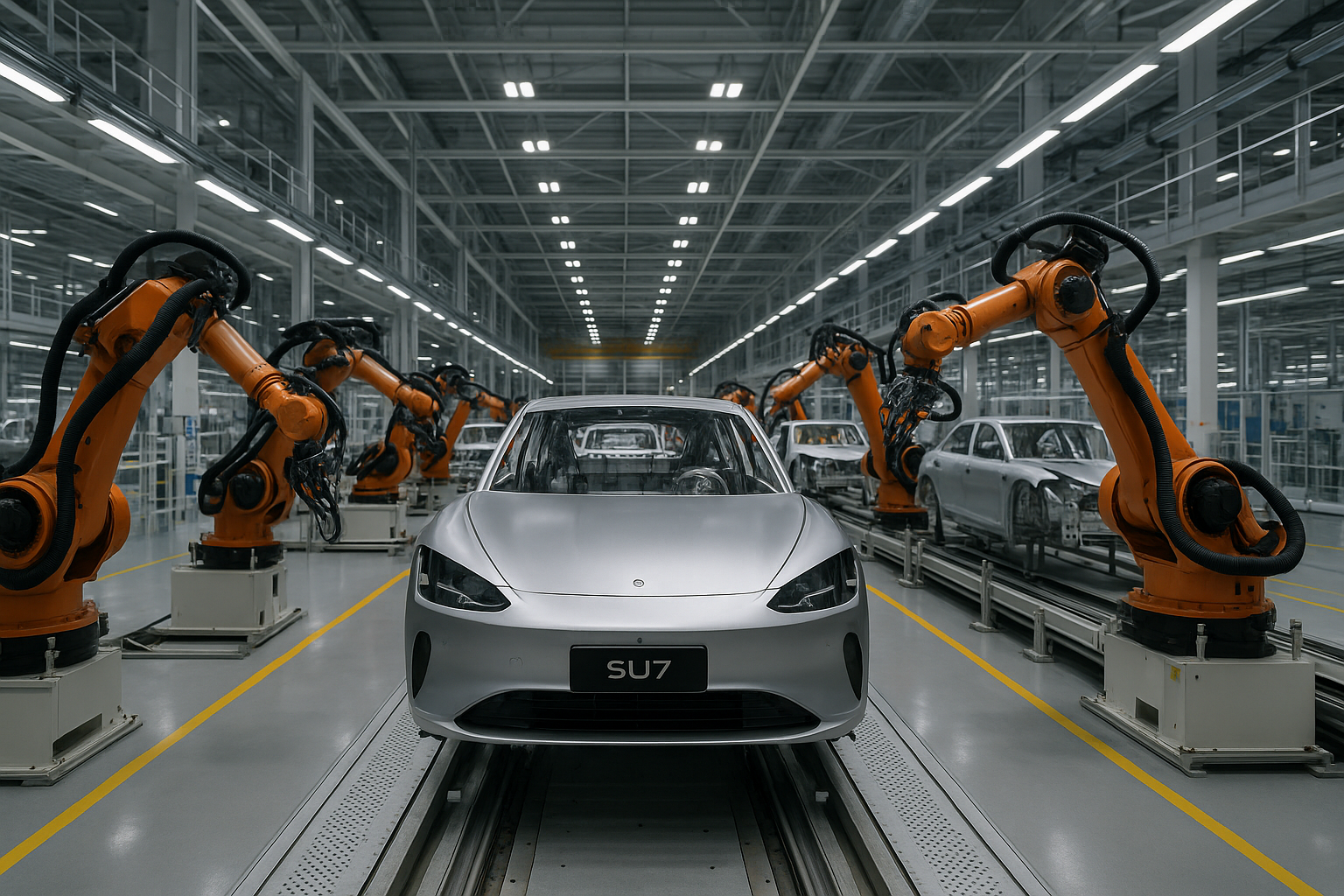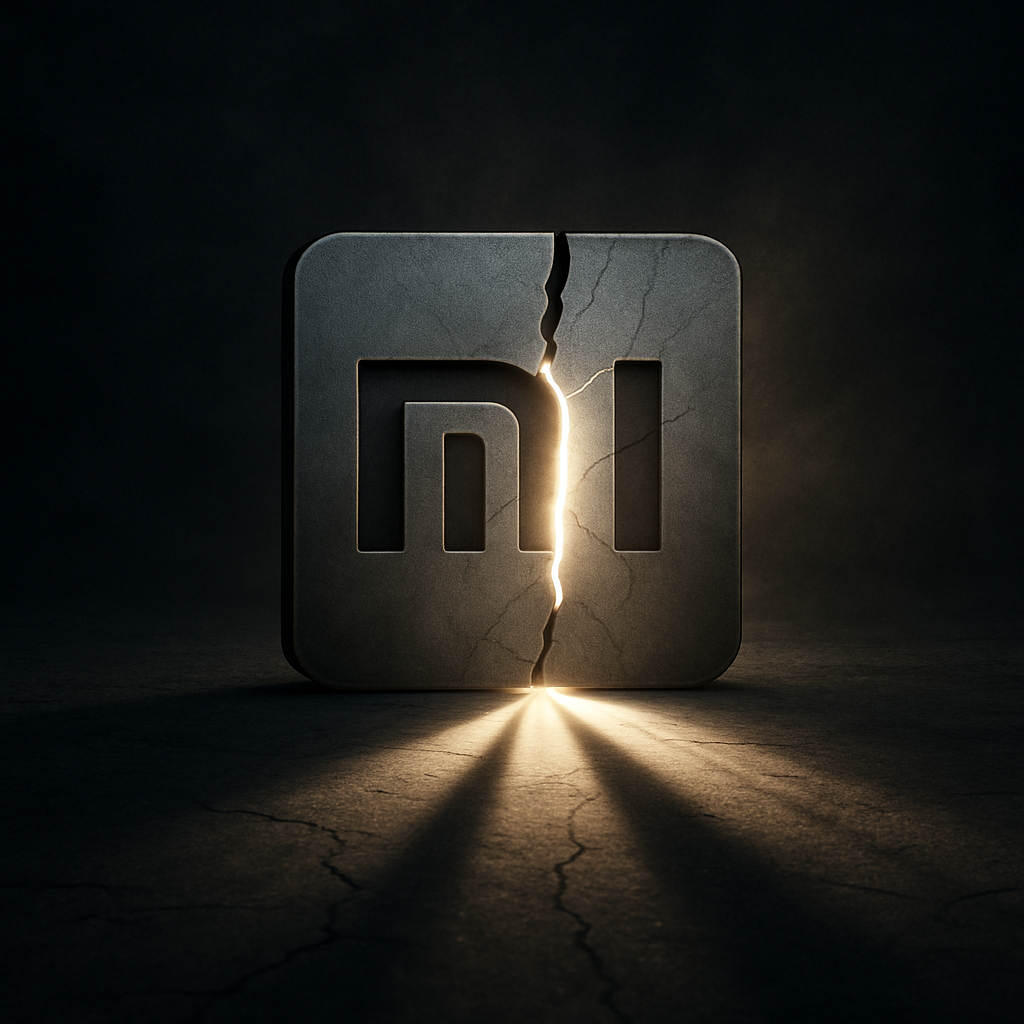The automotive world has been captivated by the Xiaomi SU7. Billed as the first major automotive effort from a smartphone giant, the SU7 launched to a tsunami of hype, drawing comparisons to both Porsche and Tesla. With staggering initial order numbers and the charismatic leadership of CEO Lei Jun, it seemed Xiaomi had cracked the code, seamlessly transitioning from consumer electronics to high-performance electric vehicles.
But just as the initial excitement reached its peak, the story has taken a sharp turn. Chinese authorities have announced a mandatory recall of more than 116,000 Xiaomi SU7 vehicles, marking the first major hurdle for the ambitious project. This isn’t just a minor software patch; it’s a large-scale recall that raises critical questions about the car’s safety, the challenges of rapid manufacturing, and whether Big Tech’s “move fast and break things” philosophy can survive in the safety-critical world of automobiles.
This recall is more than a headline from a foreign market. It’s a crucial case study for the entire auto industry, especially as more tech companies eye the trillion-dollar mobility sector. For us here in the U.S., it provides a fascinating, real-time look at the collision of tech and car manufacturing, offering lessons that will undoubtedly shape the vehicles we see on our own roads in the years to come.

The Core of the Recall: What Went Wrong?
Details from China’s State Administration for Market Regulation (SAMR) point to two primary issues that prompted this massive recall. While they may sound technical, they have significant real-world safety implications.
1. The Unintended Acceleration Risk
The first, and arguably more severe, issue relates to the car’s drive system. According to the recall notice, a flaw in the software can lead to a failure in the drive motor’s control module. In simple terms, the car might not correctly interpret the driver’s intentions.
Imagine this scenario: you’re in stop-and-go traffic and gently press the accelerator to inch forward. Due to the defect, the car might misread this input and continue accelerating even after you’ve taken your foot off the pedal. The only way to stop it would be to slam on the brakes. This is a classic case of “unintended acceleration,” a terrifying and dangerous situation that has plagued other automakers in the past.
While Xiaomi has stated that this is a low-probability event, the sheer danger it presents makes any occurrence unacceptable. The fix involves a remote, over-the-air (OTA) software update, which is a testament to the SU7’s connected nature. However, it also highlights the double-edged sword of software-defined vehicles: a single bug can affect thousands of cars instantly.
2. Defective Door Locks
The second issue concerns the vehicle’s door locking mechanism. The recall notice explains that the door locks may not function correctly, creating a serious safety hazard. In the event of a collision, a faulty door lock could either fail to open, trapping occupants inside, or swing open unexpectedly, increasing the risk of ejection.
This is a more mechanical issue than the software bug, but it’s no less serious. Vehicle doors are a critical component of a car’s safety cell, designed to protect occupants during a crash. If they don’t operate as intended, the car’s entire structural integrity is compromised.
Unlike the acceleration issue, fixing the door locks requires a physical intervention. Owners will need to bring their SU7s to a Xiaomi service center to have the locking mechanisms inspected and, if necessary, replaced. This presents a logistical challenge for a new automaker and a significant inconvenience for its first wave of customers.
Big Tech Meets Manufacturing Reality
This recall is a humbling moment for Xiaomi and a stark reminder that building cars is fundamentally different from building smartphones. The “move fast and break things” ethos, popularized in Silicon Valley, simply doesn’t work in an industry where lives are at stake.
The Perils of “Beta Testing” on the Road
In the world of software and gadgets, it’s common to release a product and refine it based on user feedback. Early adopters often act as unwitting beta testers, reporting bugs that get patched in subsequent updates. While this is acceptable for a glitchy app, it’s a catastrophic approach for a 4,000-pound vehicle traveling at highway speeds.
The SU7 recall suggests that in the rush to meet its ambitious launch timeline, some aspects of vehicle validation and quality control may have been compromised. The pressure to go from concept to mass production in just a few years is immense, and it appears some critical failure modes were missed during pre-production testing.
Supply Chain and Manufacturing Hurdles
Xiaomi’s CEO, Lei Jun, has been celebrated for his deep involvement in the manufacturing process, even visiting the factory floor to thank workers. However, building a car involves a complex web of hundreds of suppliers providing thousands of components. A single faulty part, like a door lock mechanism, can bring the entire production line to a halt and trigger a massive recall.
For a new player like Xiaomi, managing this intricate supply chain is a monumental task. Unlike established automakers who have spent decades building relationships and quality control systems with their suppliers, Xiaomi is still navigating this complex landscape. This recall will be a painful but necessary lesson in the importance of rigorous supply chain management and quality assurance.

The Ripple Effect: What This Means for the EV Market
The Xiaomi SU7 recall doesn’t exist in a vacuum. It sends ripples across the entire electric vehicle industry, particularly for other tech companies looking to make a similar leap.
A Win for Traditional Automakers?
Legacy automakers like Ford, GM, and Volkswagen are likely watching this situation with a mixture of concern and vindication. For years, they have been criticized for being slow to innovate, but they have also emphasized the importance of safety, reliability, and manufacturing excellence. This recall underscores their argument that building cars is a marathon, not a sprint.
These companies have centuries of collective experience in vehicle engineering, safety testing, and managing global supply chains. While they may lag in software integration and user interface design, their core competency lies in producing safe, reliable vehicles. The SU7’s troubles may cause some consumers to reconsider the appeal of a car built by a tech company and stick with a brand that has a long-standing reputation for safety.
Lessons for Apple, Google, and Others
The tech world is rife with rumors of other giants developing their own vehicles. Apple’s “Project Titan” has been an on-again, off-again saga for years, and Google’s Waymo is a leader in autonomous driving technology. The challenges faced by Xiaomi will undoubtedly serve as a cautionary tale for these companies.
They will be paying close attention to the public’s reaction, the financial impact on Xiaomi, and the logistical nightmare of executing a large-scale recall. It may force them to reconsider their strategies, perhaps opting for partnerships with established automakers rather than trying to build everything from scratch. The dream of a sleek, minimalist “Apple Car” is appealing, but not if it comes with the risk of unintended acceleration or faulty doors.
The Road Ahead for Xiaomi
Despite this significant setback, it would be a mistake to write off Xiaomi’s automotive ambitions. The company has deep pockets, a powerful brand, and a loyal customer base. How it handles this recall will be a crucial test of its long-term viability as a car company.
The Importance of Transparency
In the coming weeks and months, Xiaomi’s response will be under intense scrutiny. The company needs to be transparent, proactive, and deeply apologetic to its customers. This means communicating clearly about the problems, making the recall process as seamless as possible, and offering compensation or incentives to affected owners.
CEO Lei Jun’s charismatic and public-facing leadership style, which was so effective during the launch, will now be put to the test. He needs to own this failure, reassure customers that safety is his top priority, and outline the concrete steps the company is taking to prevent such issues in the future.
Long-Term Brand Damage?
The biggest question is whether this recall will cause lasting damage to the Xiaomi brand. In the short term, it’s a significant blow to its reputation. The “tech-savvy, high-quality” image it cultivated has been tarnished.
However, automotive history is filled with examples of companies that have recovered from major recalls. Toyota’s unintended acceleration crisis in the late 2000s and Volkswagen’s “Dieselgate” scandal are two prominent examples. Both companies survived, and eventually thrived, by taking responsibility, fixing the problems, and rebuilding trust with their customers.
Xiaomi has the opportunity to do the same. If it handles this crisis with competence and humility, it can emerge as a more mature and resilient automaker. The road ahead is bumpy, but the journey is far from over.

FAQs
Q1: What is the Xiaomi SU7?
A: The Xiaomi SU7 is a high-performance electric sedan developed by the Chinese tech giant Xiaomi. It’s the company’s first foray into the automotive market and has been positioned as a competitor to vehicles like the Tesla Model S and Porsche Taycan.
Q2: Why was the Xiaomi SU7 recalled?
A: The recall of over 116,000 SU7s was initiated due to two primary safety concerns: a software flaw that could lead to unintended acceleration and a defect in the door lock mechanisms that could pose a hazard during a collision.
Q3: How many cars are affected by the recall?
A: More than 116,000 vehicles are included in the recall, which represents a significant portion of the cars Xiaomi has produced and delivered to date.
Q4: How is Xiaomi fixing the problems?
A: The unintended acceleration risk is being addressed via an over-the-air (OTA) software update. The faulty door locks, however, require a physical repair, and owners must bring their vehicles to a service center.
Q5: Does this recall affect the U.S. market?
A: Currently, the Xiaomi SU7 is only sold in China, so this recall does not directly affect any customers in the United States. However, it serves as an important case study for the U.S. auto market as more tech companies enter the automotive space.
Q6: Is it common for new cars to have recalls?
A: Yes, recalls are relatively common in the automotive industry, even for established manufacturers. However, the scale of this recall so early in the SU7’s production life is notable and highlights the challenges of launching a new vehicle.
Conclusion
The Xiaomi SU7 recall is a pivotal moment in the evolving narrative of the automotive industry. It’s a real-world stress test of the idea that a tech company can seamlessly pivot to producing complex, safety-critical machines. While the initial hype surrounding the SU7 was intoxicating, this recall serves as a sobering reminder that the road to automotive success is paved with challenges that can’t be solved with software updates alone.
For Xiaomi, this is a painful but invaluable lesson. The company’s future in the auto industry now depends on its ability to navigate this crisis with transparency and a relentless focus on customer safety. For the rest of us, it’s a fascinating glimpse into the future of mobility, a future where the lines between tech and tradition are increasingly blurred.
We’ll be watching closely to see how this story unfolds. What do you think? Does this recall change your perception of tech companies entering the car market? Share your thoughts in the comments below, and be sure to check out our other deep dives into the latest EV trends and automotive news at Zapxa.com.




